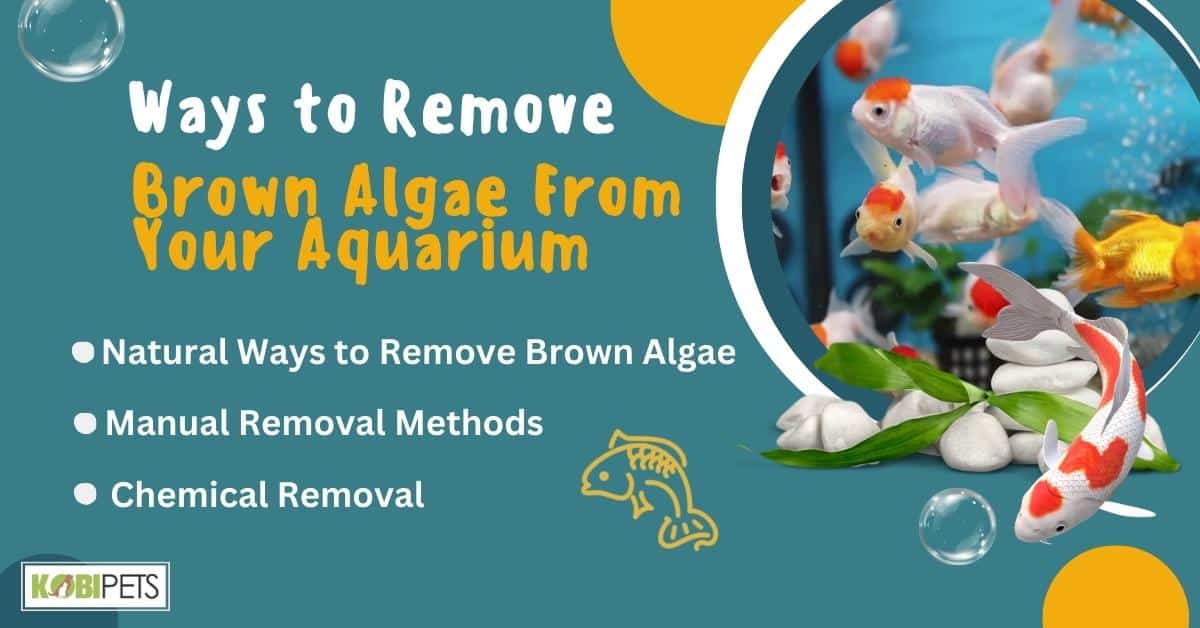
Brown algae is an unsightly and potentially dangerous problem that can crop up in aquariums. It’s not only unsightly, but it can also compete with other aquatic life for oxygen, light, and nutrients. Fortunately, there are both natural and chemical ways to get rid of brown algae in your tank.
In this blog, we’ll discuss the different methods you can use to remove brown algae from your aquarium and keep it looking its best.
Reasons Why Brown Algae Can Form in an Aquarium
Brown algae can be a troublesome issue for aquarium owners, but understanding the conditions that cause it can be beneficial in preventing future growth. Brown algae, also known as diatoms, are usually caused by nutrient-rich water and sunlight.
An excess of nitrates and phosphates combined with bright light will allow brown algae to thrive in an aquarium. It is important to monitor liquid levels that could affect water clarity and utilize blackout curtains to reduce exposure to sunlight when needed.
Also, regular water changes will help reduce nutrient levels and discourage the further growth of brown algae.
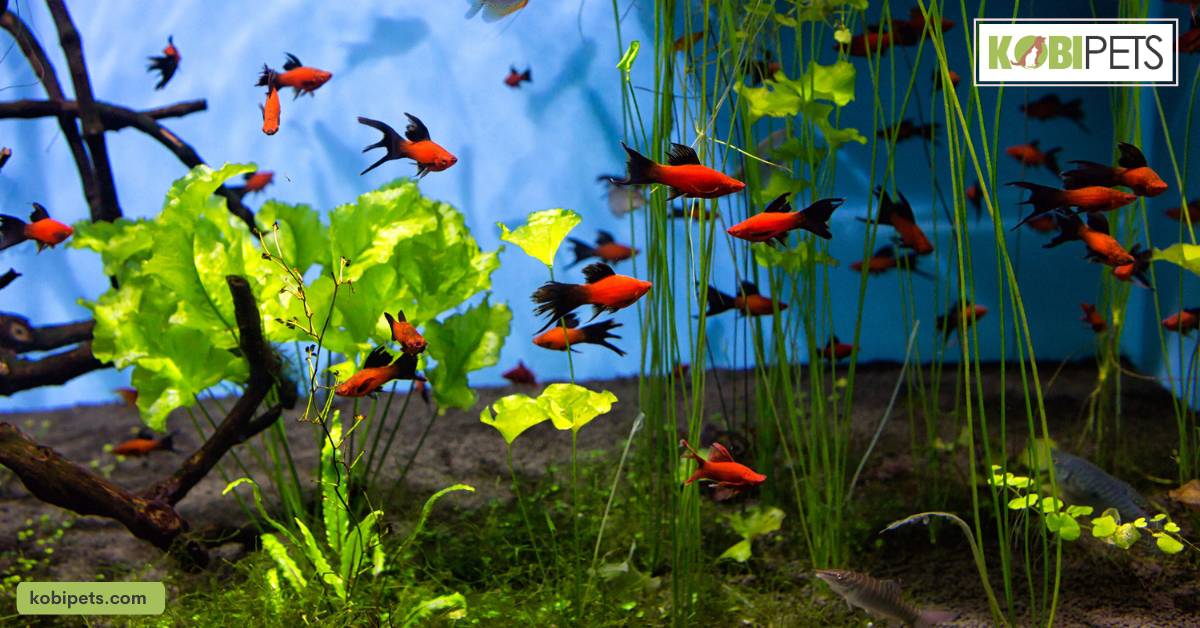
Natural Ways to Remove Brown Algae
Increase Light Intensity
If you have a saltwater or freshwater aquarium and have been plagued by brown algae then bumping up the light intensity could be beneficial. There are natural ways to remove brown algae without the need for chemical treatments.
Upping the lighting can help keep these common aquatic pests from overtaking your tanks, as more light encourages Brown Algae to die off due to a lack of nutrients and inhibited reproduction rates.
Make sure your booster lamps do not emit too much extra light energy, however. It is also important to approach this method gradually over time to prevent shocking your fish with too much light all at once – start with extra hour increments and test how your tank reacts.
With careful monitoring, increasing the light intensity can successfully help remove that pesky Brown Algae from your aquarium.
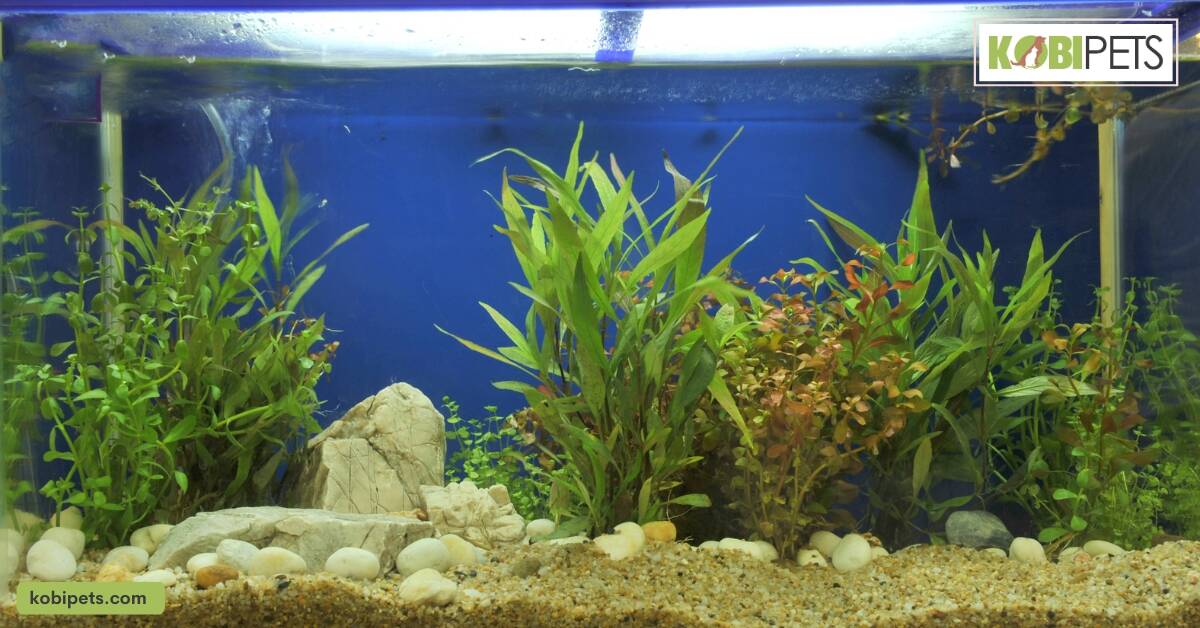
Reduce the Number of Nutrients in the Water
One of the best strategies is to reduce the number of nutrients in the water in the aquarium by performing regular water changes and filtering out materials like fish waste and uneaten food.
Additionally, proper lighting can help limit brown algae growth as it thrives in areas with strong light sources. Lastly, adding snails or other aquatic plants into an aquarium can help control the brown algae population naturally by consuming excess nutrients and competing with it for sunlight.
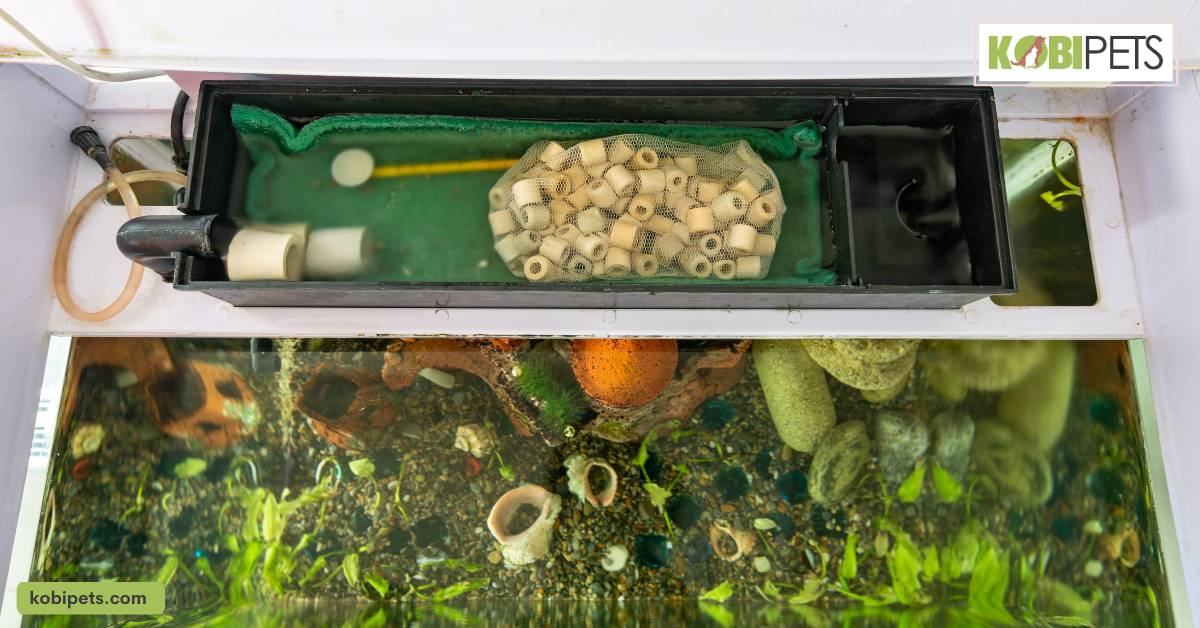
Increase Oxygen Levels
One of the simplest, yet most effective, natural ways to remove brown algae from aquariums is to increase oxygen levels. Adding extra aeration can be done in several simple ways, like adding more bubbling air stones or using an air-driven filter.
Increasing water flow in the tank can help as well since this will help get rid of dead zones and prevent algae from attaching and growing in those areas. Also, try not to overfeed your fish and keep up with regular water changes.
A clean tank with plenty of healthy fish means fewer nutrients for algae to feed off of, which will keep them at bay.
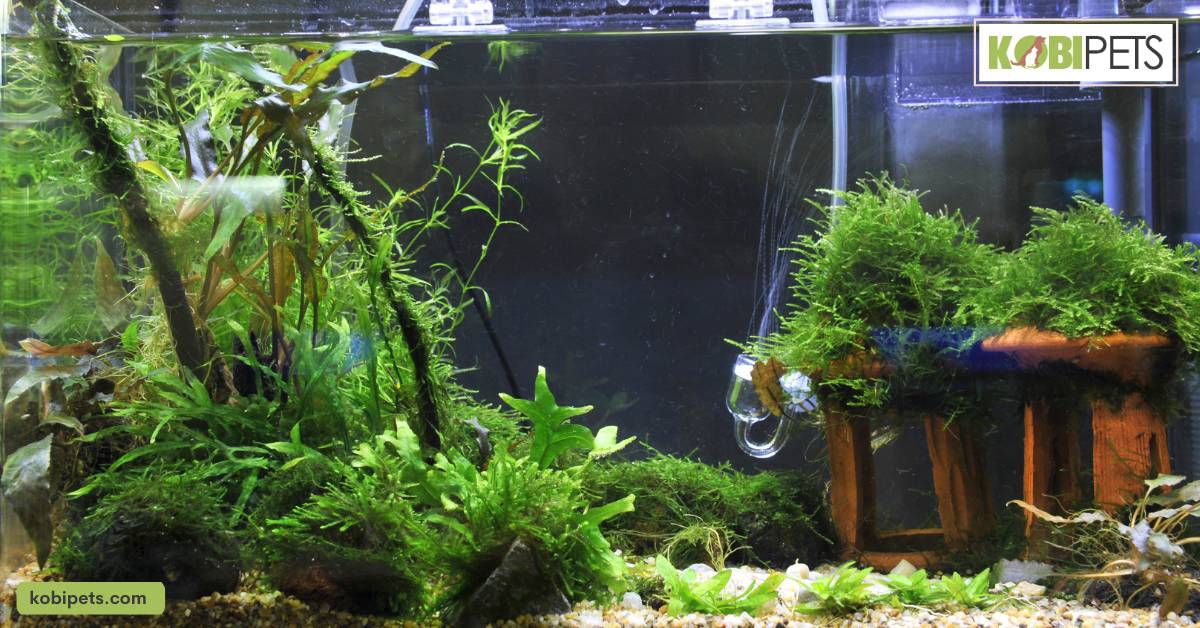
Use Natural Algae Eaters
Natural algae eaters like Siamese Algae Eaters, Otocinclus Catfish, and Rabbit Snails are excellent ways to help keep a tank free from brown algae. Not only do these creatures make great additions to an aquarium due to their biodiversity, but they also actively consume brown algae which help preserve the aesthetic of any home or public aquarium system.
It’s essential for aquarists to ensure that the type of cleaner being introduced is right for the environment, as some species can over-eat and upset the balance. This is why research around specific types of algae eaters before introducing them into the tank is highly recommended.
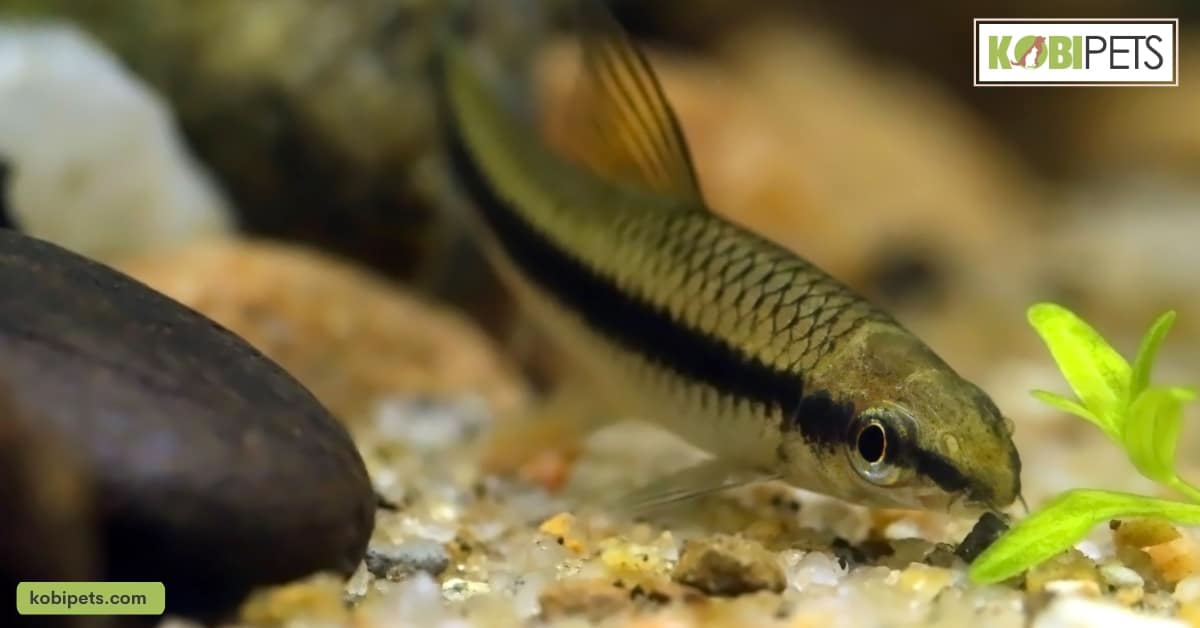
Manual Removal Methods
Scraping
Scraping is one great way to quickly remove the unsightly nuisance from your tank without disrupting the delicate ecosystem inside. This requires patience and a steady hand, as well as an appropriate scraping tool such as a plastic card or even a razor blade for more stubborn crops of algae.
To scrape off brown algae, slowly slide the tool just underneath the surface of the glass so that it shaves away the affected parts. Just remember to be careful not to scratch or damage your tank in the process.
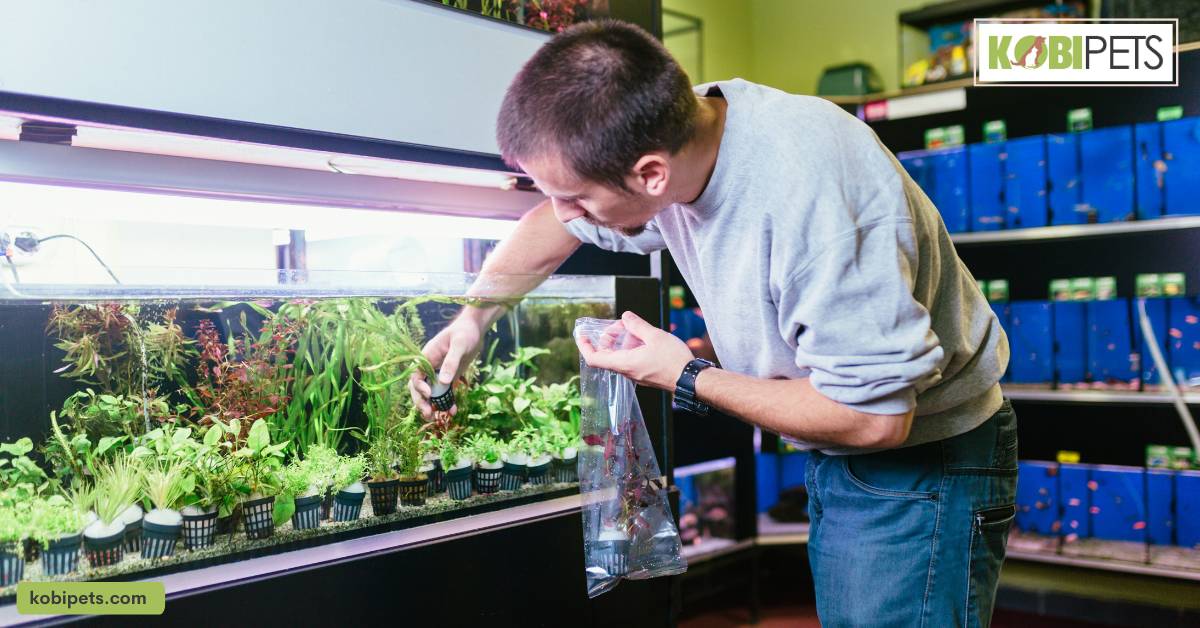
Brushing
Brown algae can be a difficult nuisance to deal with in an aquarium. Fortunately, there is a way to manually remove these organisms without damaging the tank inhabitants or disturbing the ecosystem.
To start, you must first consider the types of organisms that are affected by brown algae. Then, you can use one of two manual removal methods; either collecting it manually with a sponge or using a cleaner magnet specifically designed for this purpose.
When using the sponge method, it is important not to put too much pressure on the glass since this may cause damage to the aquarium. With a cleaning magnet, ensure that you are following the limitations specified by its manufacturer as scratching may occur if used incorrectly.
Lastly, continue to monitor your aquarium regularly and consistently clean out any brown algae that reappear in order to keep your tank environment healthy for all its inhabitants.
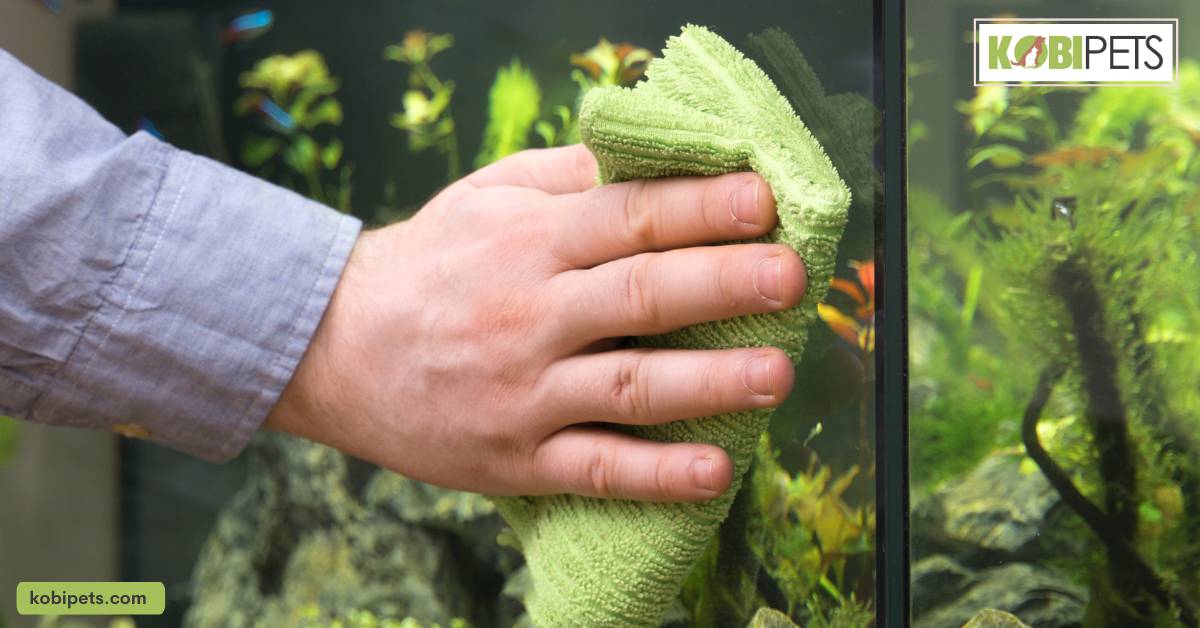
Chemical Removal
Algaecides
Algaecides for Chemical Removal is an ideal way to get rid of brown algae that plague aquariums. These algaecides contain active ingredients like copper, azole, and metofluthrin which are highly effective in controlling brown algae population.
Depending on the type of algaecide used, it may take from a few days to a few weeks for the algae to die out completely. Additionally, when selecting an algaecide for your tank, be sure to use one specifically formulated for aquarium use and follow the directions on the label carefully in order to avoid any dangerous side effects.
Ultimately, proper usage of Algaecides for chemical removal is guaranteed to restore the beauty of your aquarium with pristine water free of bothersome brown algae.
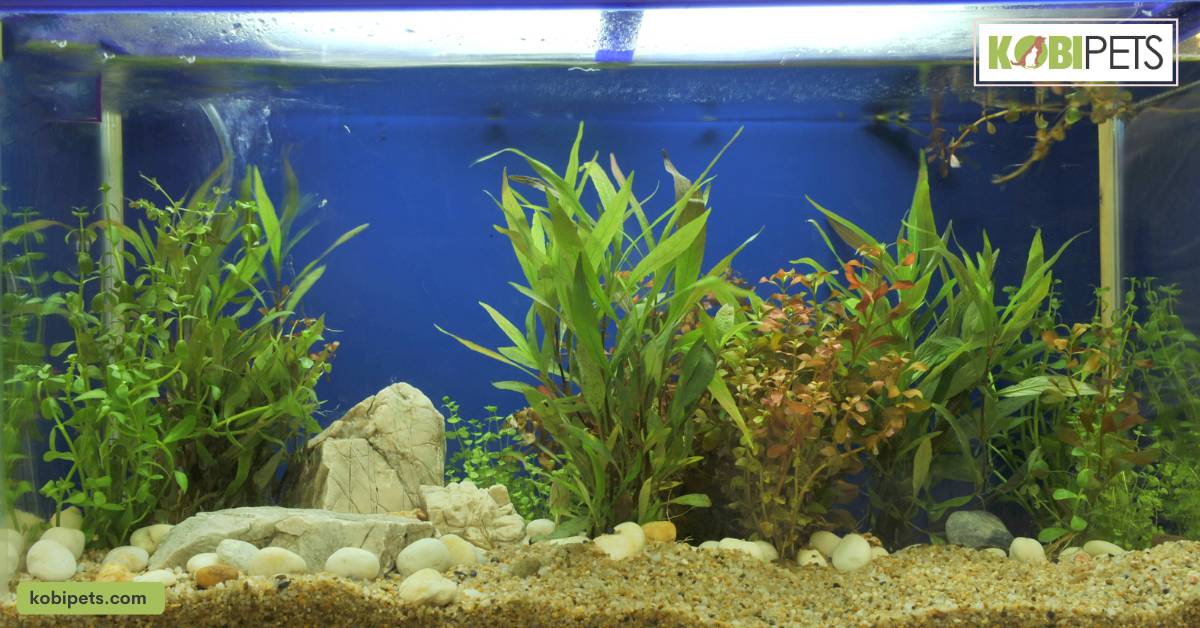
Hydrogen Peroxide
Hydrogen Peroxide (H2O2) is a chemical commonly used to remove brown algae from aquariums. It can be administered by adding it directly to the water, or by dosing it with an aerosol canister.
H202 acts quickly on brown algae, and within 48 hours the tank should be noticeably free of brown algae. The key to the successful chemical removal of brown algae with H2O2 lies in good timing and close monitoring of the tank’s parameters.
It’s important to check pH, as well as ammonia, nitrite, and nitrate levels before and after using H202 to ensure healthy living conditions for your fish and other inhabitants.
Finally, it’s advisable that once the algae have been removed, regular maintenance such as water changes and filtering should be resumed immediately in order to help prevent more aggressive forms of algae growth in the future.

In Conclusion
Brown algae can be a troublesome issue for fish keepers, but with careful monitoring and maintenance, it can be controlled. The key is to reduce nutrient levels in your tank by performing regular water changes and filtering out materials like uneaten food and fish waste.
Additionally, increasing light intensity and introducing natural algae eaters into the tank can help keep brown algae at bay. If these methods fail, manual scraping or chemical treatments may be necessary. Overall, with the right approach and care, brown algae can be kept in check and your aquarium will remain a healthy and beautiful environment for its inhabitants.


